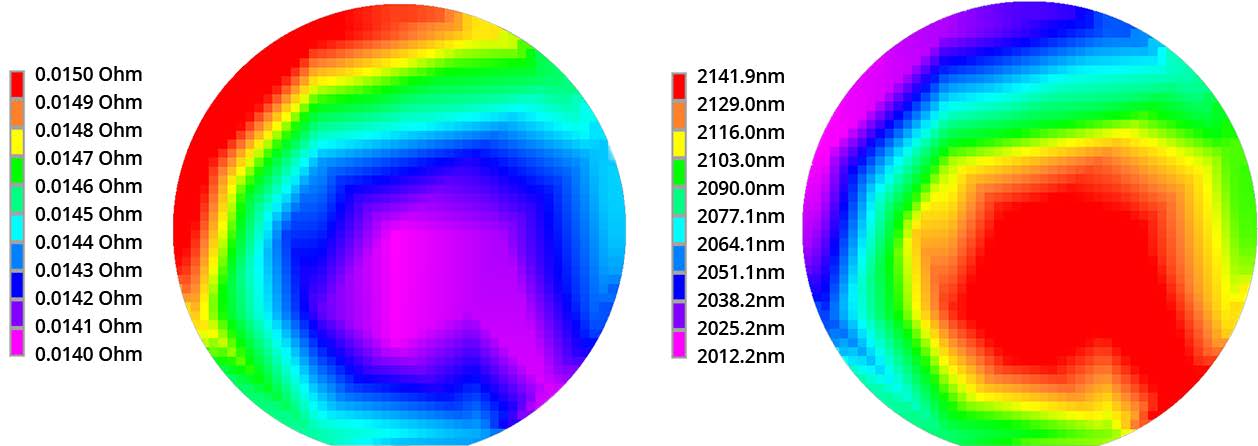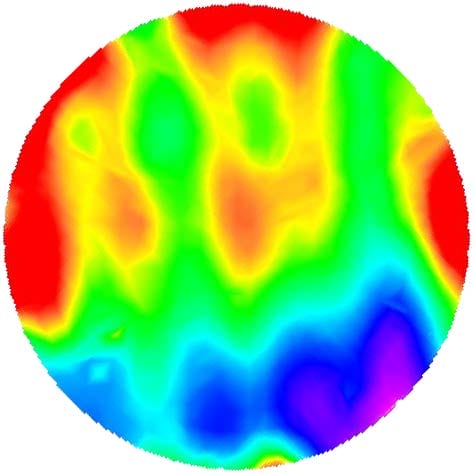KLA R54 Four-probe Resistivity Meter

KLA R54 Product Introduction of Four-Probe Resistivity Meter
KLA R54 Four-probe resistivity meterisKLAResistivity measurement products. From semiconductor manufacturing to flexible electronic products required for wearable technology, thin-film resistance monitoring is of great significance to any industry that uses conductive films.KLA R54 Four-probe resistivity meterFunctionally, it has been optimized for mapping the uniformity of metal films, ion implantation characterization and annealing characteristics, film thickness and resistivity measurement, as well as non-contact film thickness measurement.
KLA R54 Advantages of the four-probe resistivity meter
Custom editing of test points,Including rectangular, linear, polar coordinates and custom configurations
The maximum capacity can be selected300Millimeter-round orA4(210mm*297mm"Sample"
Conductor and semiconductor thin-film resistors10It is applicable within a range of orders of magnitude
Four probes can be configured(4PP)Or non-contact eddy currents(EC)"Mode"
A closed system is convenient for measuring photosensitive or environmentally sensitive samples
Support15mmMaximum sample height
High precisionX-Y"Platform
SmallerECProbe size
"AutomaticECProbe height error correction
CompatibilityKLAThin-film resistance measurement probe;
KLA R54 The measurement principle of the four-probe resistivity meter
Four-point probe(4PP)The probe composed of four conductive probes contacts the surface of the conductive layer with a controllable force,Among them, there is a non-conductive barrier layer between the measured conductive layer and the substrate. The standard probe configuration for measurement is to apply current between two outer probes and measure voltage between two inner probes. When measuring thin-film resistance, the thickness of the conductive layer should be less than the distance between the two probes1/2.KLAinR54Dual-mode technology has been developed on the four-probe resistivity meter. This technology enables the measurement of voltage on the spaced probes and is equipped with dynamic boundary effect correction and probe spacing error compensation functions.KLAIt provides a rich variety of probe types to apply and optimize the characterization measurement of different surface materials, and can be used for almost any conductive film or ion-implanted layer.
Electric eddy current(EC)Non-contact conductive film measurement technology. A time-varying current is applied through a coil to generate a time-varying magnetic field. When this magnetic field approaches a conductive surface, an induced time-varying current (eddy current) will be generated on that surface). These eddy currents, in turn, generate their own time-varying magnetic fields, which couple with the probe coil and produce signal changes proportional to the resistance of the sample.KLASpecialECThe technology, with a single probe located at the top of the sample, can dynamically adjust the height of the probe at each measurement point, which is quite important for the accuracy and repeatability of the measurement.ECThe method is not affected by the size of the probe or surface oxidation, and is very suitable for softer ones or those that are not applicable4PPSamples measured by the contact method.

Industry application of KLA R54 four-probe Resistivity Meter:
Semiconductor | "Tablet andVR"Display | Compound semiconductor | Advanced packaging |
Solar energy | Printed circuit | Wearable devices | Conductive material |
Product application of KLA R54 Four-probe Resistivity Meter:
I. Uniformity of Metal Films
The uniformity of the thin-film resistance of metal films is quite important for ensuring the performance of components, and most metal films can pass through4PPandECMake a measurement.ECRecommended for thicker, highly conductive metal films4PPIt is suitable for thinner metal films(>10Ω/sq)But in any case,4PP/ECAll showed high correlation, thus accurate results can be obtained by using any method.KLA R54 Four-probe resistivity meterThe resistance distribution map can characterize the uniformity of the thin film, deposition quality and other process fluctuations.
Ii. Characterization by Ion Implantation
4PPThe method is the standard measurement technique for evaluating ion implantation processes. After thermal annealing, the ion implantation distribution can be tested to identify lamp faults and wafers/Hot and cold spots caused by poor platform contact or changes in injection dosage. For the silicon ion implantation layer, the thermal annealing process is necessary for activating the doped ions.
Iii. Film Thickness/Resistivity/Film Resistance
Through the collected wafer data,KLA R54 Four-probe resistivity meterIt is possible to draw distribution graphs of thin film resistance, thin film thickness or resistivity. By inputting the resistivity of the material,The film thickness distribution can be calculated and displayed;Or by inputting film thickness data,Then the resistivity distribution can be calculated.
Iv. Data Collection and Visualization
KLA R54 Four-probe resistivity metertheRSMapperThe software integrates data collection and analysis functions, featuring an intuitive visual interface. It can be used either on the device itself or offline. The various coordinate layout tools that come with the software can help users easily set data measurement points.
Product parameters of KLA R54 Four-probe Resistivity Meter:
ZScope | 15mm | ZPlatform type | "Automatic |
X-YPlatform type | "Automatic | Maximum load-bearing capacity of the sample stage: | 2.5 kg |
Electrical properties |
| R54-4PP | R54-EC |
Repeatability of measurement points | < 0.02% | < 0.2% |
For more parameters, please contact us |
Measurement diagram of KLA R54 Four-probe Resistivity Meter:












